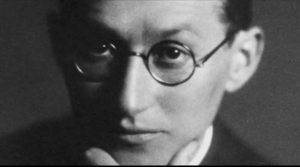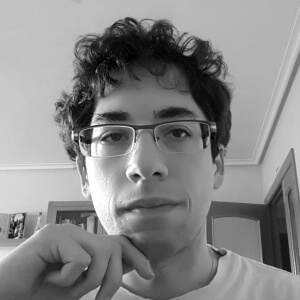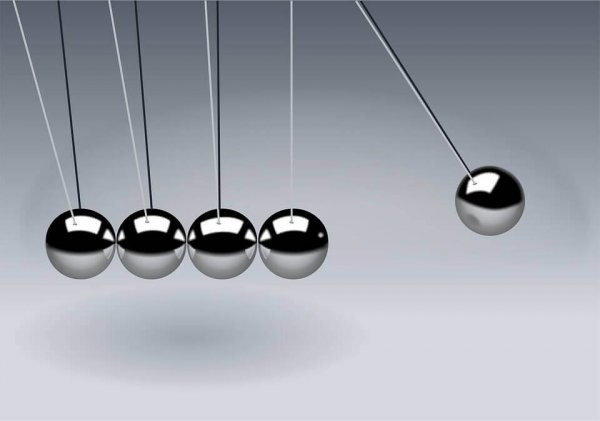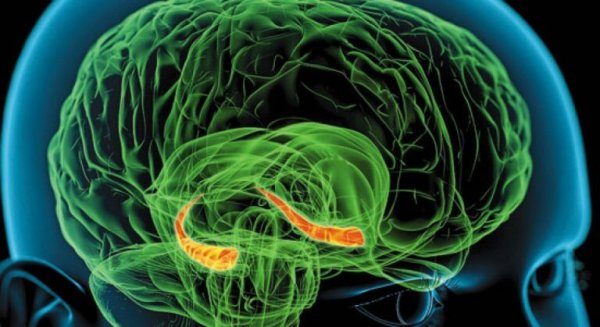Kurt Lewin and Field Theory


Written and verified by the psychologist Sergio De Dios González
But that stimulus-response relationship was too simple. Behaviorism overlooked our perceptions and even our thoughts. It didn’t make the connection that behaviors are the outcome of an interaction between a person and their environment.
The one person who realized it was Kurt Lewin. This psychologist came up with field theory, among other theories. They put a spotlight on people’s interaction with their environment. His research was so important that he’s now seen as one of the fathers of social psychology.
Kurt Lewin’s life
Kurt Lewin was born in Prussia, what we now call Poland. Later on his family moved to Germany, where he studied medicine and biology. In the end he started to take more interest in psychology and philosophy.
During WWI, Kurt was wounded after Germany sent him into battle. When he got home, he started to work at the Berlin Institute of Psychology. Kurt decided to leave Germany when the Nazis were gaining power. He ended up settling in the US, where he taught at a few different universities.
He had been in contact with ideologies that were similar to socialism, Marxism, and the fight for women’s rights. These ideas lead him to one conclusion: psychology could help make society more equal. That’s why he put his effort into trying to pick out and understand what factors really played a part in our behavior.

With a goal of examining human behavior, Kurt Lewin looked for inspiration in theories about relativity and quantum physics. He found one theory that could work for him: field theory. To make that theory part of psychology, he decided to study behavior but without separating it from its natural context.
That’s why he focused on studying groups. His research set the precedent for what would later become social psychology and organizational psychology. His experiments revolved around group psychology, the dynamics of organizational change, and leadership.
Field theory
Taking from field theory in physics, Kurt Lewin established two basic conditions for his field theory.
- The first one is that a behavior comes about through a totality of coexisting facts.
- The second one says that these coexisting facts have the characteristics of a “dynamic field.” This means that the state of each one of the field’s parts depends on all the others.
In physics, a field is an area of space where there are properties that show up as physical quantities (temperature, energy, etc.). Lewin used the concept of an “energy field” from physics in his field theory to explain the environmental factors that play a part in human behavior.
According to him, behavior doesn’t depend on the past or the future. It actually depends on all current facts and events and how a subject sees them. The facts are interconnected and they make up a dynamic energy field that he called the life space.
The life space
The life space, or the psychological energy field, is the surroundings that encompass a person and their perception of their immediate reality. Basically, it’s a subjective, personal space.
It’s like a summary of the way you look at the world, with all your goals, possibilities, fears, experiences, and expectations. But this field also has certain limits that come especially from the physical and social characteristics of the surroundings.

Kurt Lewin’s field theory studies our behavior with a sense of total perspective. That way we don’t end up with an analysis with everything split up on its own.
The psychological field’s influence on our behavior is so huge that Lewin even said that if there are no changes in the field, there won’t be any changes in behavior.
Lewin thought that psychology shouldn’t focus on studying people and their surroundings like they were two entirely separate pieces. Instead he thought that we have to look at the way they impact each other in real time.
If there are no changes in the field, there won’t be any changes in the behavior.
Relevant variables
Just like with an energy field, each part impacts every other part. To understand our behavior we have to keep in mind all the variables that play a part in it in real time. This is true on both an individual and group level.
We also can’t analyze these elements individually. So we have to focus on studying the way they interact to get a complete picture of what exactly is going on. Lewin came up with three key variables for explaining this idea. They are:
- Energy: what causes actions, what motivates them. When there’s a need, an energy or energy field will appear, and that will lead to an action. All these actions have a charge, either positive or negative. The charge of these actions also leads to other actions (positive) or pushes back (negative). The behavior that comes from all this reacts to the psychological mix of different energies.
- Tension: the difference between a person’s goals and their current state. The tension is internal and pushes you to go through with your intentions.
- Need: what gives the motivating tension a start. When a person has a physical or psychological need, an internal state of tension will awaken inside them. This state of tension makes the system (the person) change to try to get back to its initial state and satisfy its need.
Lewin says that the field theory shows what every person’s possible and impossible behaviors are. An awareness of the life space helps us make a logical prediction about what a person will do.
Every single behavior, or at least every single intentional behavior, has a motivation. There are tensions pushing it, energies moving it, charges directing it, and all this has a goal.

Motivations
Kurt Lewin said that you can explain all your actions with one simple fact: we see specific paths and ways to unload certain tensions. We’re attracted by the actions we see as ways to let that tension out.
Kurt thought that these kinds of actions must have a positive charge. So that would be why you feel energy pushing you to carry them out. And then other actions must have the opposite effect. They’ll increase your tension, and so they must have a repulsive effect.
To understand all this better here’s an example of a need we all have: the need for recognition. When you start to feel this need, it awakens a motivation to get recognition in an area that interests you. That motivation will have a positive charge and lead you to act with the goal of getting recognition.
The motivation would wake up a tension between your current situation and your need for recognition. Then that will lead you to think about possible actions to get that recognition. And depending on what area you want to be recognized in, you’ll do whatever you think gives you the best chances of getting it.
But that stimulus-response relationship was too simple. Behaviorism overlooked our perceptions and even our thoughts. It didn’t make the connection that behaviors are the outcome of an interaction between a person and their environment.
The one person who realized it was Kurt Lewin. This psychologist came up with field theory, among other theories. They put a spotlight on people’s interaction with their environment. His research was so important that he’s now seen as one of the fathers of social psychology.
Kurt Lewin’s life
Kurt Lewin was born in Prussia, what we now call Poland. Later on his family moved to Germany, where he studied medicine and biology. In the end he started to take more interest in psychology and philosophy.
During WWI, Kurt was wounded after Germany sent him into battle. When he got home, he started to work at the Berlin Institute of Psychology. Kurt decided to leave Germany when the Nazis were gaining power. He ended up settling in the US, where he taught at a few different universities.
He had been in contact with ideologies that were similar to socialism, Marxism, and the fight for women’s rights. These ideas lead him to one conclusion: psychology could help make society more equal. That’s why he put his effort into trying to pick out and understand what factors really played a part in our behavior.

With a goal of examining human behavior, Kurt Lewin looked for inspiration in theories about relativity and quantum physics. He found one theory that could work for him: field theory. To make that theory part of psychology, he decided to study behavior but without separating it from its natural context.
That’s why he focused on studying groups. His research set the precedent for what would later become social psychology and organizational psychology. His experiments revolved around group psychology, the dynamics of organizational change, and leadership.
Field theory
Taking from field theory in physics, Kurt Lewin established two basic conditions for his field theory.
- The first one is that a behavior comes about through a totality of coexisting facts.
- The second one says that these coexisting facts have the characteristics of a “dynamic field.” This means that the state of each one of the field’s parts depends on all the others.
In physics, a field is an area of space where there are properties that show up as physical quantities (temperature, energy, etc.). Lewin used the concept of an “energy field” from physics in his field theory to explain the environmental factors that play a part in human behavior.
According to him, behavior doesn’t depend on the past or the future. It actually depends on all current facts and events and how a subject sees them. The facts are interconnected and they make up a dynamic energy field that he called the life space.
The life space
The life space, or the psychological energy field, is the surroundings that encompass a person and their perception of their immediate reality. Basically, it’s a subjective, personal space.
It’s like a summary of the way you look at the world, with all your goals, possibilities, fears, experiences, and expectations. But this field also has certain limits that come especially from the physical and social characteristics of the surroundings.

Kurt Lewin’s field theory studies our behavior with a sense of total perspective. That way we don’t end up with an analysis with everything split up on its own.
The psychological field’s influence on our behavior is so huge that Lewin even said that if there are no changes in the field, there won’t be any changes in behavior.
Lewin thought that psychology shouldn’t focus on studying people and their surroundings like they were two entirely separate pieces. Instead he thought that we have to look at the way they impact each other in real time.
If there are no changes in the field, there won’t be any changes in the behavior.
Relevant variables
Just like with an energy field, each part impacts every other part. To understand our behavior we have to keep in mind all the variables that play a part in it in real time. This is true on both an individual and group level.
We also can’t analyze these elements individually. So we have to focus on studying the way they interact to get a complete picture of what exactly is going on. Lewin came up with three key variables for explaining this idea. They are:
- Energy: what causes actions, what motivates them. When there’s a need, an energy or energy field will appear, and that will lead to an action. All these actions have a charge, either positive or negative. The charge of these actions also leads to other actions (positive) or pushes back (negative). The behavior that comes from all this reacts to the psychological mix of different energies.
- Tension: the difference between a person’s goals and their current state. The tension is internal and pushes you to go through with your intentions.
- Need: what gives the motivating tension a start. When a person has a physical or psychological need, an internal state of tension will awaken inside them. This state of tension makes the system (the person) change to try to get back to its initial state and satisfy its need.
Lewin says that the field theory shows what every person’s possible and impossible behaviors are. An awareness of the life space helps us make a logical prediction about what a person will do.
Every single behavior, or at least every single intentional behavior, has a motivation. There are tensions pushing it, energies moving it, charges directing it, and all this has a goal.

Motivations
Kurt Lewin said that you can explain all your actions with one simple fact: we see specific paths and ways to unload certain tensions. We’re attracted by the actions we see as ways to let that tension out.
Kurt thought that these kinds of actions must have a positive charge. So that would be why you feel energy pushing you to carry them out. And then other actions must have the opposite effect. They’ll increase your tension, and so they must have a repulsive effect.
To understand all this better here’s an example of a need we all have: the need for recognition. When you start to feel this need, it awakens a motivation to get recognition in an area that interests you. That motivation will have a positive charge and lead you to act with the goal of getting recognition.
The motivation would wake up a tension between your current situation and your need for recognition. Then that will lead you to think about possible actions to get that recognition. And depending on what area you want to be recognized in, you’ll do whatever you think gives you the best chances of getting it.
All cited sources were thoroughly reviewed by our team to ensure their quality, reliability, currency, and validity. The bibliography of this article was considered reliable and of academic or scientific accuracy.
- Caparrós, Antonio (1977). Historia de la psicología. Barcelona: Círculo Editor Universo.
- Díaz Guerrero, Rogelio (1972). La evolución psicológica según Kurt Lewin: Dos conferencias.
- Fernández, Alejandra (1993). Kurt Lewin (1890-1947): Una evaluación actual de su significación para la psicología. Madrid: Universidad Nacional de Educación a Distancia.
- Lewin, Kurt (1988). La teoría del campo en la ciencia social. Barcelona: Paidós.
- Lewin, Kurt (1997). Resolving social conflicts: Field theory in social science. Washington, DC: American Psychological Association.
This text is provided for informational purposes only and does not replace consultation with a professional. If in doubt, consult your specialist.







